Expectations
There are certain scenarios one expects to happen inside a productive classroom. However, the ideal situation isn’t always what a teacher walks into after transition (or even during activity transitions). If you think you have set your class up for success, and expectations are clear, but for some reason, you are experiencing classroom management issues during transitions, you are not alone. I have been there, but I implemented a simple change that helped me. I think it can help you, too.
Failed Expectations
Transitions can be the most difficult time in the classroom for me. Any time there is an unused space of time, my students take the opportunity to…relax. This loss of time control translated into loss of class time. We don’t have time to waste. One example for me in the middle/high school level is the transition time between classes. I had set expectations at the beginning of the year with the students. They were told how to transition into class. The Bell Work activity was posted for them, and they knew to get prepared for the lesson, sit down, and quietly begin the work.
My expectations failed every day. I walked into an unprepared classroom (dare I say sheer chaos some days). Students stood around the room chatting with friends. They had not gathered any materials for the day. They were on their phones. They were definitely not on task. I spent 3-5 minutes corralling teenagers and reining in their focus on the current task before I could take care of the administrative duties required of me at the start of class. This loss of class time was wasted time, and this was only the start of class.
💡 Wasted time became a huge frustration.
Regaining Control of Your Time.
You have set expectations, so why aren’t they on task? The answer is simple. They are human. Social interactions often rank high on the student priority list. Age only changes the presentation. So, how do we stop wasting time?
💡 Set expectations that are visible.
Think about what you would like to see happen in various scenarios during class. Transitions are hard for me, so I want to focus here. A class transition for me looks like this:
When the bell rings, I expect to walk into the room and greet my well-behaved, uniformed students, seated in their assigned places, diligently focused on their assignments. Ideally, the room is silent, save for a few muted whispers. They should already be prepared with all the necessary materials, so there should be minimal movement while I tend to my required administrative duties. I expect to begin class promptly following attendance and messages from the office.
If I want this to happen, I need to pull out clear, short, manageable directives from my ideal scenario and write them down. For my transition example, I would pull out the following:
- Students sitting in assigned seats
- Students have a computer, sharpened pencil, and daily worksheets
- Students are working on the bell work assignment quietly
- Phones and earbuds are put away
- Dress code in tact
💡 Write the expectations down clear, concise, kid friendly language, and show them to your students.
1. Post Your Expectations
Now that you have pulled doable actions from your ideal scenario. Post your expectations. Don’t assume they remember or know what you want.
I know. I hear you. You have told them every day for the last 9 weeks. They should know. I feel that with every ounce my being. I had those same thoughts when my coach and I were brainstorming ideas. When she told me to post my expectations, I didn’t understand why that would work. How in the world would a visual of how to act when you come into class change actions of kids who don’t follow the instructions for the bell work assignment that is posted every day? It didn’t make sense, but I was going to try it. The next day, I added a simple expectations slide into my presentation; I projected it onto the board with my transition music (a little jazz chill instrumental never hurts to promote calm).
Are you stinking kidding me?!? There were more kiddos in their seats ready to work than I had had all year. It wasn’t every student, but I definitely noticed a difference in culture when I posted expectations versus when I did not post expectations. I consistently added the expectations slide every day. The number of students following expectations grew each day until they all understood.
💡 Don’t give them any excuses for failing to meet your expectations.
2. Consistency & Consequences
This is not a magic wand sort of situation. I didn’t turn my classroom around in one day. It took time and patience. There were days of consistently posting the expectations before they all were doing it. It’s also important to note that posting the expectations wasn’t the only action I had to take. I had to intervene a little, too.
Here are the steps I took:
- Starting with that first day, I came in and verbalized the expectations they were seeing on the board.
- I explained what they should be doing right down to checking their ears for earbuds. Yup. I made them pull hair back and take off their hoods to prove to me how beautiful their ears were without earbuds.
- I checked uniforms and made a big deal how great certain students looked in uniform.
- I thanked specific students for being seated in the correct seat.
- I reminded them phones should be put away
I pointed out each item on the list, and I waited for 100% cooperation before we moved on. I was the proverbial dog with a bone. The list will be specific to your needs, but during implementation, drawing their attention to what you want them to do and waiting for every student to abide is key.
💡 Channel your inner Yoda you must. Patient you have to be.
Sometimes that meant assigning consequences. At my school, we had a merit and demerit system. So, if I came in the room and they were not in assigned seats, those students would earn demerits. This was not my favorite part, but for some kiddos, they had to earn demerits to know I meant business when they pushed the boundaries. Your consequences will be determined by you and your school. No matter what the consequence, the key is consistency. Don’t slack one day and let a student out of their seat slide with no consequence. It will be noticed and seen as a vulnerability in your system.
That system for me meant that I needed a plan for every transition beginning, middle, and end of class.
Starting Class Expectations
When my students come into my room, I expect them to gather materials, be in dress code (we had a uniform), and sit in their assigned seat with phones and earbuds put away. The expectation was the same every single day. I made a habit to include a standard expectation slide in my slideshow for the day.
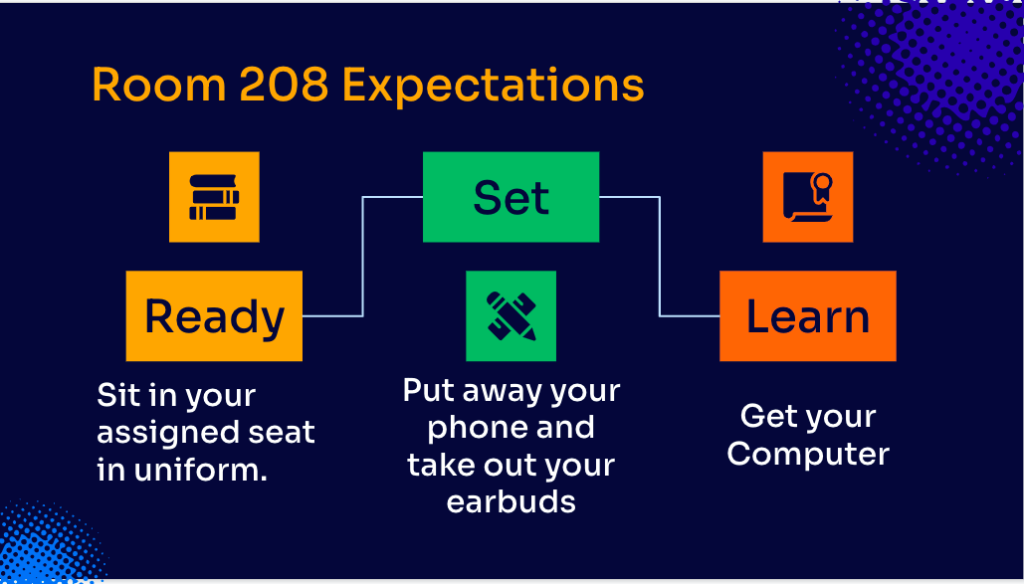
[Caption: screenshot of an expectation slide. This slide was created from a Slidesgo presentation template.]
The only section that changes is the Learn. That is where I put the materials needed for the day. It does not change very often. If they need to pick up a worksheet or study for a quiz, it will go under the Learn section.
Expectations during class
Maybe class started out great. They have morphed into those angels you envisioned they could be at the start of a class, but somehow, in the middle of the lesson, they fall apart. Turn and Talks are a great example of this collapse for me. I love giving my students a chance to stop and talk about the learning. It is a great opportunity for practicing English, and it scaffolds the learning. I can also get a quick formative assessment to see who is actually getting it and who needs more help.
However, I found myself saying, “Okay, turn to your shoulder partner and tell them a STEAL characteristic you found for Juliet and show them your evidence. You have 3 minutes. Go.” It seemed clear to me, but the lesson would often collapse here. They couldn’t get it together and spend the time doing what I had asked them to do and how I thought it should be done.
I began to shy away from these kinds of activities to chunk my lessons. What I didn’t realize is they needed me to set expectations and post them so they had a clear understanding of what I wanted.
I began adding a slide into my presentation right before the activity.
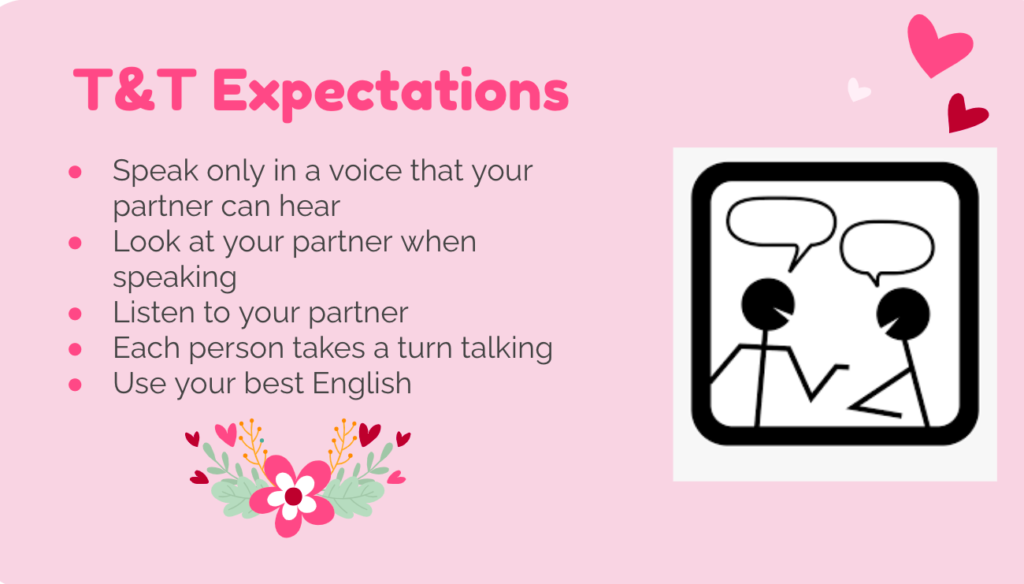
[Caption: screenshot of a turn and talk expectation slide for a lesson activity. This slide was adapted from a Slidesgo presentation template.]
Don’t forget to teach this expectation. Before moving into the activity, point out the expectations. If these are new expectations, model it for them first. It will take time away from class, but if this is an activity you will continue to utilize during the year, you will gain that time back.
I don’t usually leave this slide up while they discuss because it is more important for me to post the slide with the discussion topic and the timer, but I can always stop them if they get too loud, for example, and bring them back to this slide to highlight an expectation. If needed, I stop the entire activity and bring the group focus to the board where the expectation will be displayed and give them a reminder.
💡 Go back to the expectations whenever you need to even if you have to pause your activity to do so.
I don’t always have to give whole class reminders. Sometimes, I can gently remind one or two kids as I am walking around.
Closing Expectations
I will be the first one to admit that I lose track of time. Unfortunately, this toxic personality trait sneaks into my classroom occasionally, and I have been known to be teaching part of my lesson when the bell rings. Oops.
On the rare occasion this lack of closure happens, a form of chaos ensues and it leaves me feeling anxious. I am sure the kids feel it, too. I don’t want that for me or them. Even when pacing is working out perfectly and we get to the end of the lesson, I spent years blurting out my expectations for them and listing closing announcements verbally, none of which were really heard.
💡 There is a better way. Post your closing expectations.
Posting your closing expectations makes life so much easier. For me, it was as simple as adding a slide at the end of my presentation. The students usually have a formative assessment to complete before they can pack up. The Exit Ticket usually has its own set of expectations, but once they finish it, if you don’t outline the expectations for closing out, disorder can creep into the mix.
There are different ways to close out the lesson. Some teachers like to insert behavior rewards at the end of class. For example, phone privileges at the end of class could be a reward, but that will depend on your school policies. However, if you want to be able to make closing remarks a minute or two before the bell rings and have allowed phone privileges or free chat privileges, you need to have a way to bring them back to attention before announcements. I have also seen some teachers add in more specific timings on their closing expectations slide. For example, 6 minutes before the bell: one person in the group will put up supplies. 5 minutes before the bell: one person from the group will put up laptops. All group members pack up materials. 3 minutes before the bell: listen to announcements.
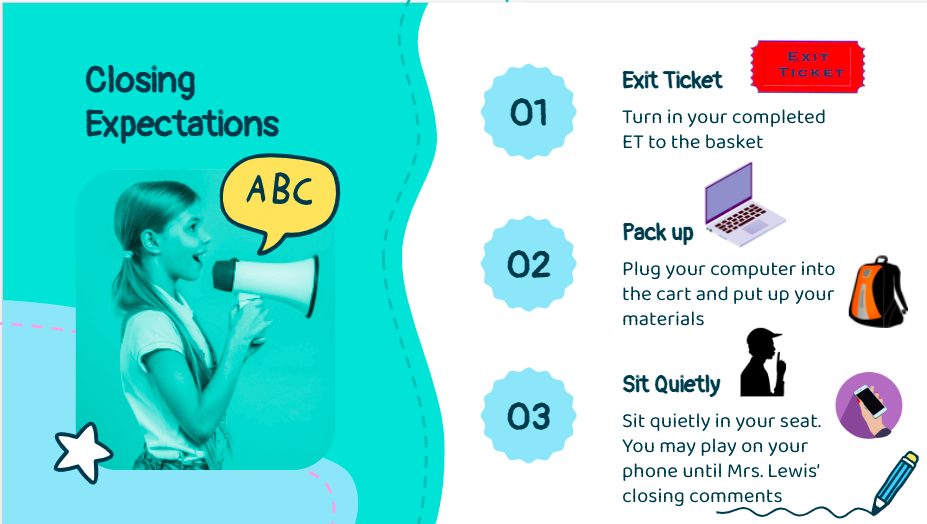
[Caption: Closing expectations slide example. This slide was created from a Slidesgo presentation template)
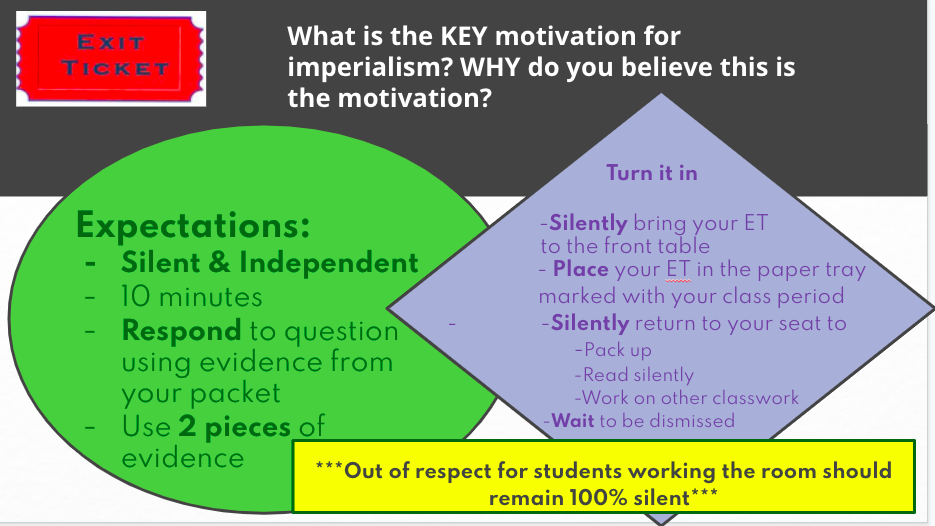
[Caption: Closing expectations on the exit ticket slide. Modified from Nashville teacher, Kate Sundell, World HIstory presentation]
Make It Yours
There are no steadfast rules for creating these expectation slides. In fact, they don’t have to be slides on your presentation. Adding slides to my presentations work for me because I am already creating the presentation for the lesson. Creating anchor charts to hang on the walls would be a great way to have it always visible for your students. No matter how you choose to post expectations, you want the students to take note. It should not fade into your classroom background.
Don’t forget to make it fun.
- Use pops of color
- Find a fun template theme to use
- Add Gifs
- Insert pictures and icons
💡 Think about what you need to happen in the room for the students to be successful.
Remember these expectations depend on your activity and your rules. There is no list you have to include. Think about what you need to happen in the room for the students to be successful. Once you have that list, write it down in a clear, concise, and student friendly language. Oh, and POST IT!
Set Those Expectations!
Remember, expectations are not just for your syllabus. Don’t set out a list of rules and expectations the first week of school and fool yourself into thinking the kiddos will remember it. Some key take aways include:
- Pull out clear, concise expectations from your ideal teaching scenario.
- Set expectations at any point in your lesson (beginning, middle, and end).
- Be consistent. be patient, and include consequences.
- Make it your own.
- POST your expectations!
💡 If you are consistent, your students will begin to expect expectations and meet them.
If you are struggling to get your students on task, I encourage you to post expectations. You are not a bad teacher, and they are not bad kids. Setting expectations and ensuring student follow through WILL CHANGE the culture of your classroom. If you are consistent, your students will begin to expect expectations and meet them. They just need to know what you expect.



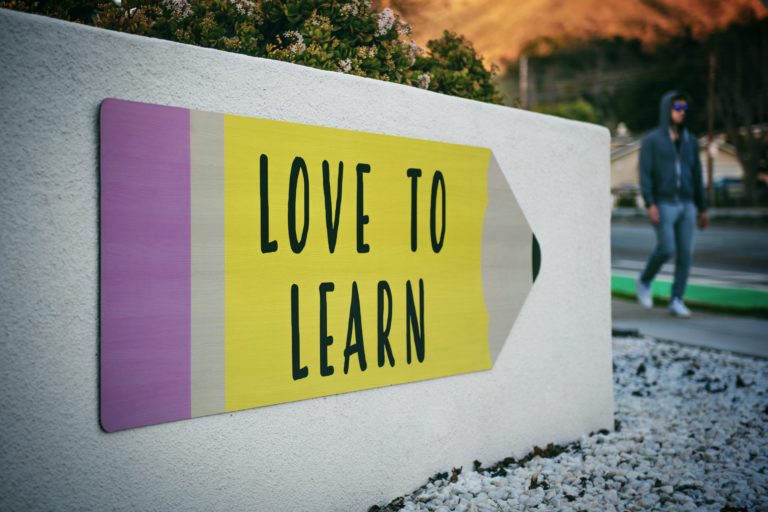
Leave a Comment